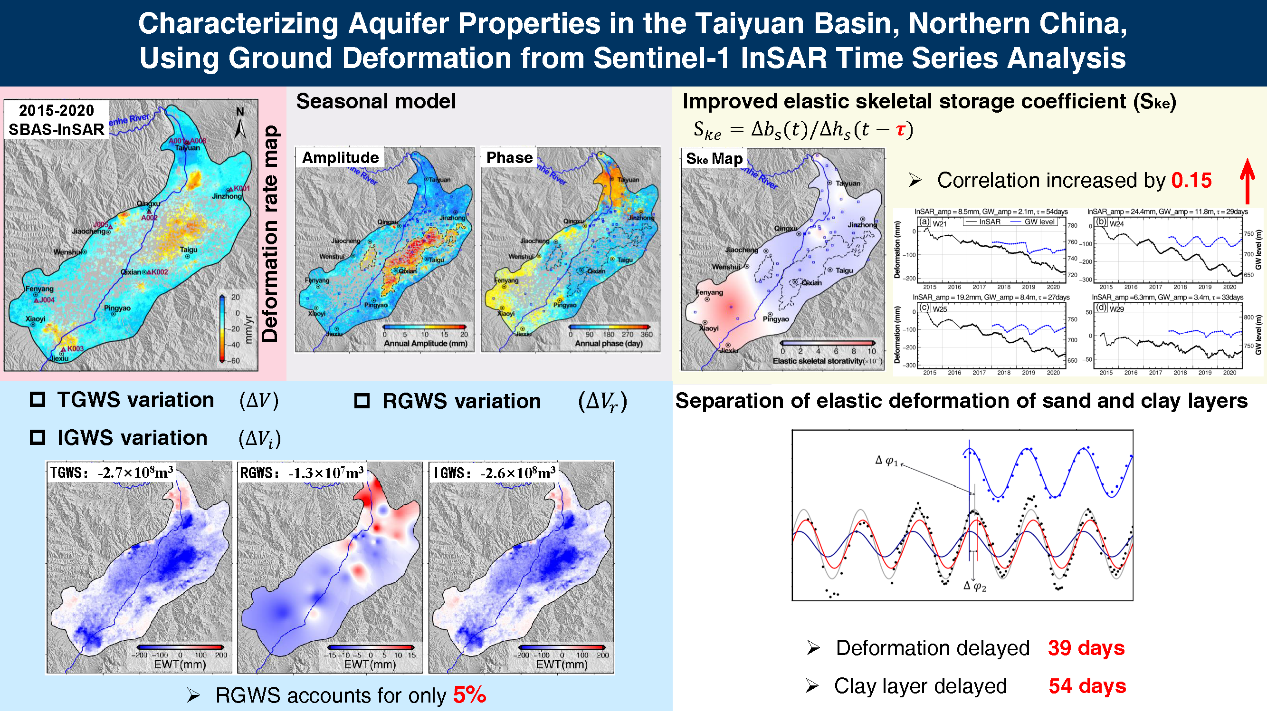Zhao, XJ (Zhao, Xiangjun) [1] [2] ; Tang, W (Tang, Wei) [1] *; Hao, GY (Hao, Guangyao) [2] [3] ; Zhao, HQ (Zhao, Hengqian) [1] ; Xiong, W (Xiong, Wei) [4]
[1] College of Geoscience & Surveying Engineering, China University of Mining and Technology-Beijing, D11 Xueyuan Road, Beijing, 100083, China
[2] Observation and Research Station of Ground Fissure and Land Subsidence, Ministry of Natural Resources, Xi’an 710054, China
[3] Shaanxi Institute of Geo-Environment Monitoring, Xi’an 710054, China
[4] Shanxi Intelligent Transportation Research Institute Co., Ltd., Taiyuan 030032, China
Original publication
Xiangjun Zhao, Wei Tang,* Guangyao Hao, Hengqian Zhao, Wei Xiong. Characterizing aquifer properties in the Taiyuan Basin, Northern China, using ground deformation from Sentinel-1 InSAR time series analysis. Journal of Hydrology: Regional Studies, 2025, 58, 102313. https://doi.org/10.1016/j.ejrh.2025.102313
Abstract
Study region:
The Taiyuan Basin in northern China, a semi-arid region where prolonged groundwater overexploitation has resulted in severe land subsidence and irreversible aquifer storage loss.
Study focus:
By integrating Sentinel-1 InSAR time series analysis (2015–2020) and groundwater level measurements, we developed a geophysical model to quantify seasonal deformation signals and the time-lagged relationships between land subsidence and groundwater level changes. Through incorporating time-lag corrections, we refined estimations of the elastic skeletal storage coefficient ( ) and groundwater storage variations. A novel method was proposed to separate elastic deformations in sand and clay layers based on their distinct hydraulic response characteristics.
) and groundwater storage variations. A novel method was proposed to separate elastic deformations in sand and clay layers based on their distinct hydraulic response characteristics.
New hydrological insights for the region:
Land subsidence lags groundwater level changes by an average of 39 days, revealing delayed compaction dominated by low-permeability clay layers. Recoverable groundwater storage accounts for merely 5% of total losses, indicating that most of subsidence results from inelastic clay compression, which underscores a critical risk of permanent aquifer storage capacity depletion. The observed 54-day delayed response in clay layers correlates with their thickness and multi-layered structure, offering critical parameters for predicting the structure of multi-layered aquifer systems. This study systematically elucidates the groundwater-subsidence coupling mechanisms, providing new insights for characterizing over-exploited aquifers and advancing sustainable groundwater resource management worldwide.
Graphical abstract

Keywords
InSAR; Land subsidence; Seasonal deformation; Skeletal storage coefficient; Groundwater storage